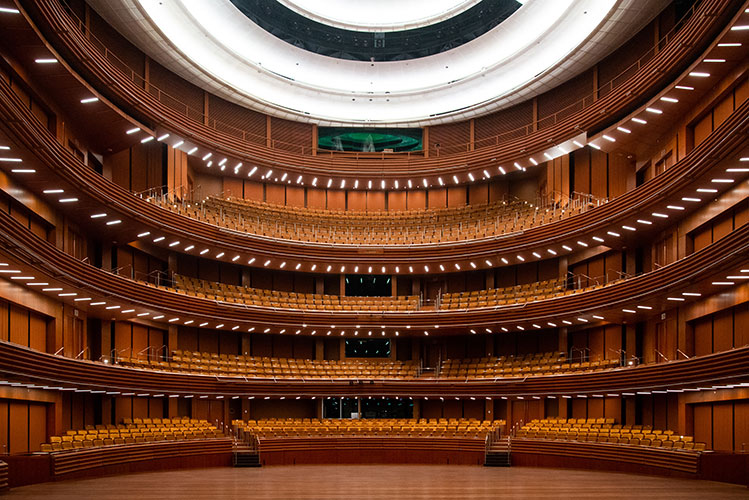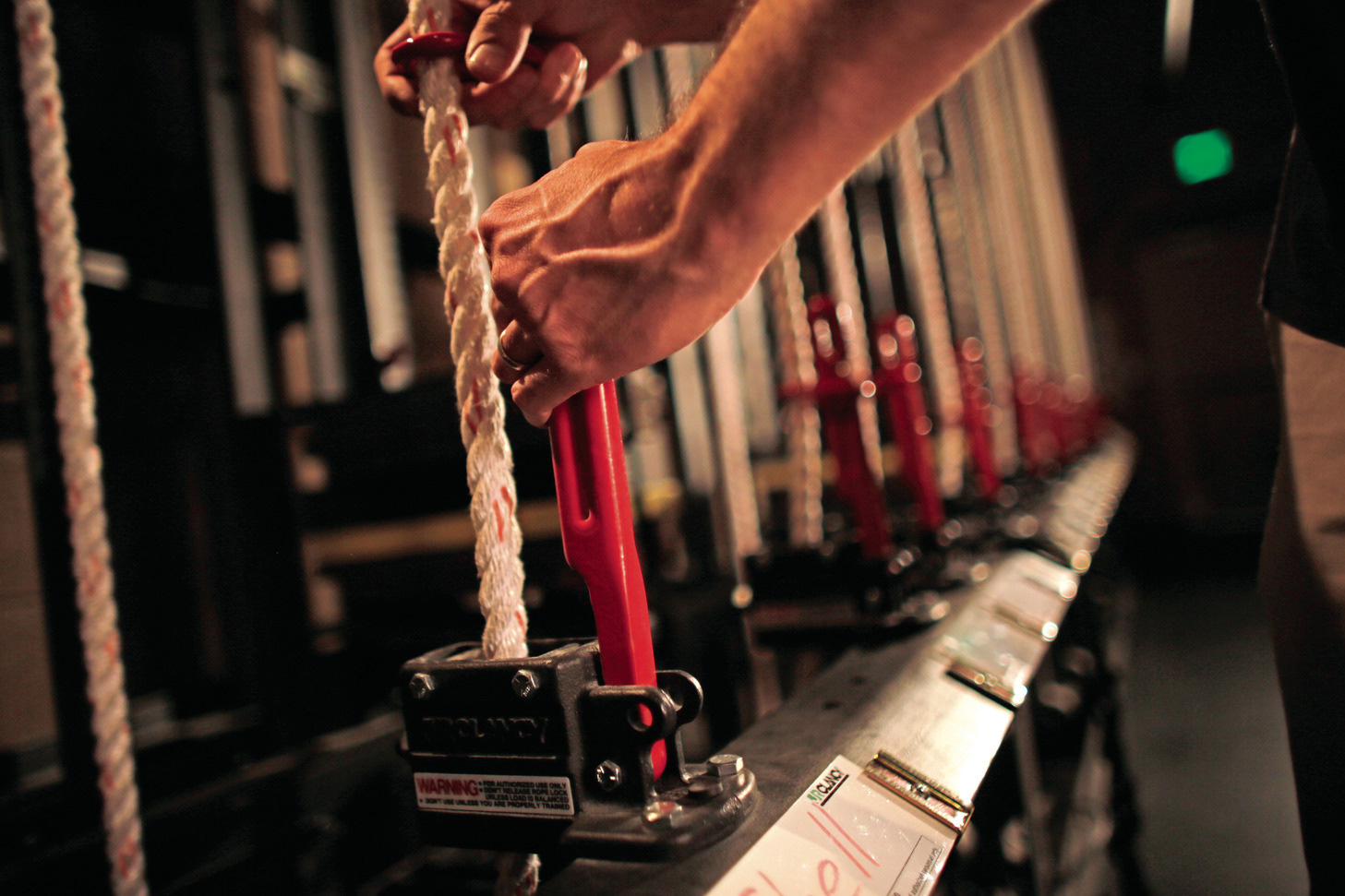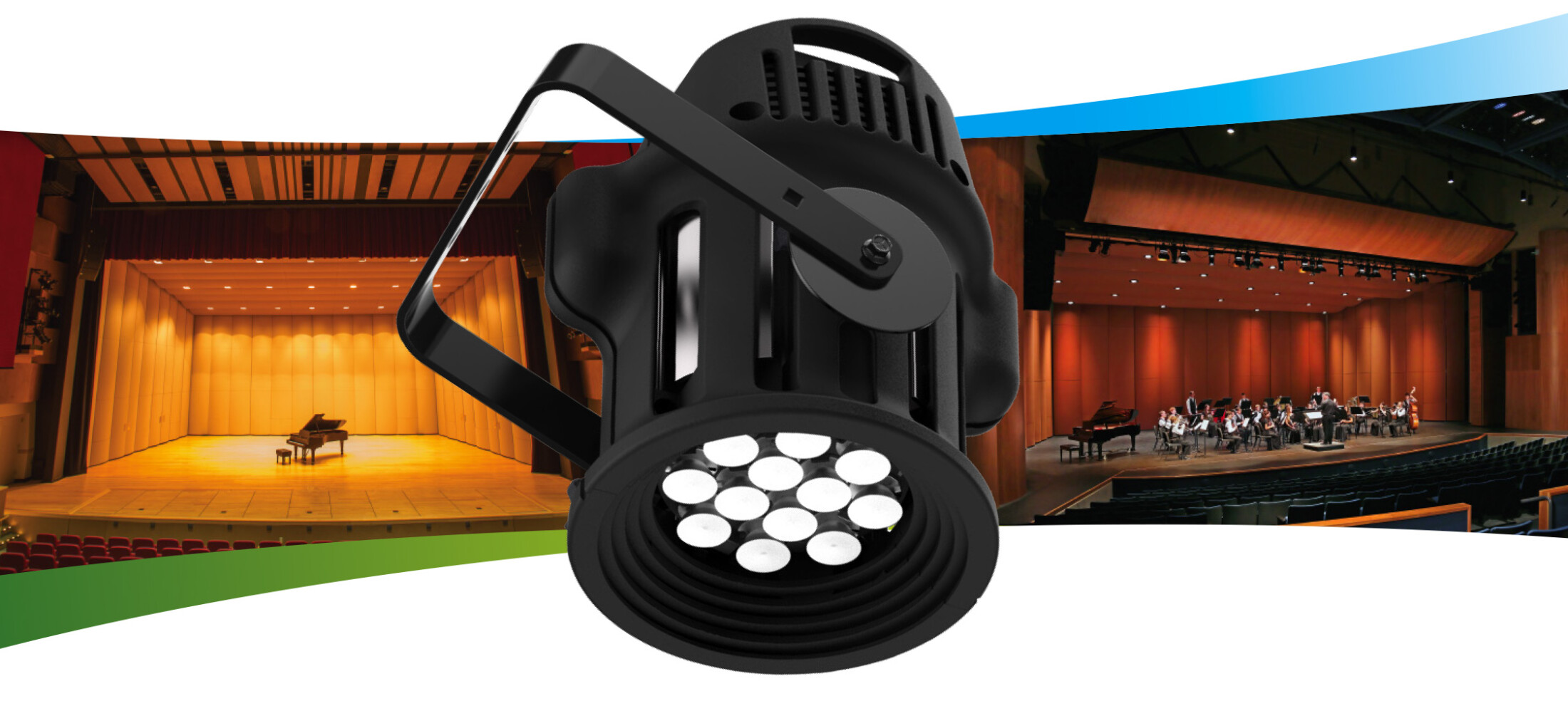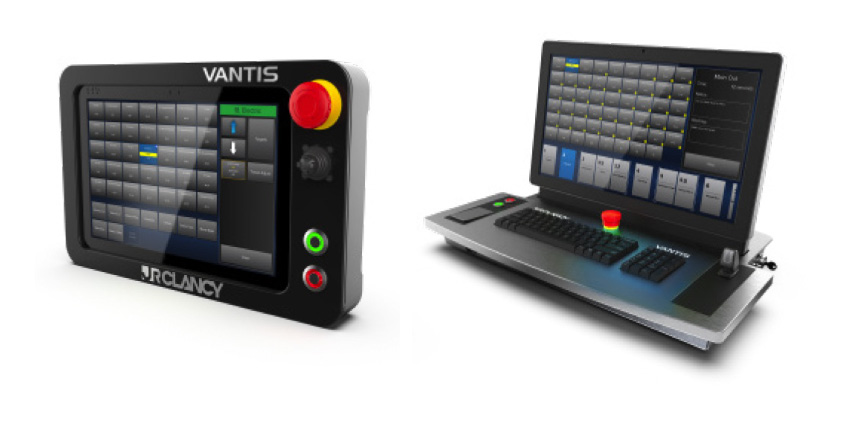The Dr. Phillips Center for the Performing Arts in Orlando, Florida, has a reputation for excellence. Since opening “The Center” in 2014, they’ve been named one of Travel + Leisure magazine’s “25 New Tourist Attractions Worth Adding to Your Bucket List” and one of Southern Living magazine’s “50 Best Places in the South Now.”
It’s no wonder they’ve received so many accolades – The Center regularly hosts regional and world-class performances and is a hub for the best regional, national and international artists, as well as for community outreach and arts education.
And now there’s another reason to put the Dr. Phillips Center on your bucket list: their new $240 million Steinmetz Hall that can seat a maximum of 1,650 people.
“Steinmetz Hall had to accommodate three things above all: it had to be a concert hall with an N1 rating, an opera and ballet house to support Opera Orlando and Orlando Ballet, and it needed to convert to a flat floor event space, too,” said Millie Dixon, Theatre Projects Director and Project Manager. It also needed to house traveling performances with their own unique stage and seating needs.
A space with this much versatility required custom solutions, acoustical excellence and extensive services, and The Center had the perfect team for the job – Architect Barton Myers Associates, Inc., executive architect HKS Architects, Inc., Baker Barrios Architects, Whiting-Turner, The Projects Group, TCL Engineering Solutions and Arup of Los Angeles, Theatre Projects Consultants, Inc., Stages Consultants, Ann Kale Associates and Wenger Corporation for their Wenger acoustical and J.R. Clancy rigging elements and custom solutions
One of the most impressive and unique customizations Wenger Corporation brought to life on the project was a one-million-pound cassette system, 78-feet wide and 62-feet long.
A Massive Cassette Designed to Move
The new semi-circle cassette system completes the Steinmetz Hall concert configuration at one end of the performance space in lieu of a proscenium. It also houses the full custom shell, ceiling rings, numerous rigging components and custom lighting.
The cassette sits on railroad tracks and moves by a pair of SERAPID rigid chain machines that push and pull the cassette slowly and safely into performance and storage positions. A custom J.R. Clancy hoist operates the tilting ceiling to allow the cassette to move from a proscenium position to downstage for concert and recital modes.
Wenger Corporation also installed two motorized, retractable towers on each side of the cassette, specially designed to fold down for storage with a custom air pallet system, yet they appear as though they’re a seamless part of the cassette shell.
The Center can also configure seating along the perimeter of the shell for chorus or in the round performances.
Let There Be Light
The cassette also needed custom lighting solutions.
“It was important to coordinate the structure with the lighting positions,” explained Steven Rust, Theatre Projects Lighting Designer. “Our goal was to provide even, shadow-free lighting for the musicians. The ceiling arcs gave us an opportunity to design lighting fitting the architecture while fulfilling the lighting design objective.”
The concert lighting system in the cassette ceiling has three rings that match the architecture of the theatre ceiling. The lighting fixtures fit into the rings, thanks to a custom, integrated solution created by the Wenger Corporation team. However, the ceiling also pivots, which required a robust bracketing and yoke system for the lights to accommodate movement from the cassette.
Theatre Projects opted for a combination of white and color-mixing LED fixtures, giving The Center the flexibility of bright lights that can dim or additional pops of color, depending on the performance.
Creating World-Class Sound
With so many different types of performances, including the Orlando Philharmonic Orchestra, The Center needed another custom solution for Steinmetz Hall: spectacular sound.
In the end, it involved 70 motorized Wenger Transform® Acoustical Banners and custom roll up banners, controlled by a J.R. Clancy Motion Control System. The team also added sound blocks and floor-to-ceiling drapery to dampen sound, along with motorized controls to manage it all.
Tying It Together with Custom Rigging
At the heart of it all is a massive, custom J.R. Clancy Motion Control System that controls all motorized elements and moves the cassette, the acoustical banners, portal hoist and the speaker clusters.
The cassette ceiling is also on a custom J.R. Clancy line shaft hoist with motors on either side. The entire ceiling pivots around one hinge point, and this hoist can safely lift and lower the three-ringed ceiling. To create even more flexibility, screw jacks can raise the telescoping portion of the two side towers and hold them in place, filling the space between the cassette and the auditorium.
Safety was key for Steinmetz Hall. When activated for movement, the cassette towers move two feet per minute on a compressed air system along the railroad tracks, and a warning system activates with alarm lights and sound whenever it is in motion.
In addition to the motorized rigging, Steinmetz Hall has a complete J.R. Clancy counterweight system consisting of 63 line sets and the space to add up to 30 more line sets in the future.
Opening Day
After four years of construction and a dream 20 years in the making, Steinmetz Hall opened in January 2022.
“This has been one of the most ambitious performing arts development projects of the 21st century,” said Kathy Ramsberger, President and CEO of the Dr. Phillips Center. “Our approach all along was to redefine the role, and the perception, of a modern performing arts center. Steinmetz Hall is an architectural marvel distinguished by its incredible acoustics and unique ability to transform in shape, size and seating to accommodate a variety of performing arts and events, from operas to symphonies to modern rock.”
“This project represents the best engineering, design, and construction available in the world,” said Chris Simpson, Wenger Corporation CEO. “To accommodate every style of performance on a world-class stage was no small task, and this team not only rose to the challenge but exceeded it. This is truly some of our best work to date.”












